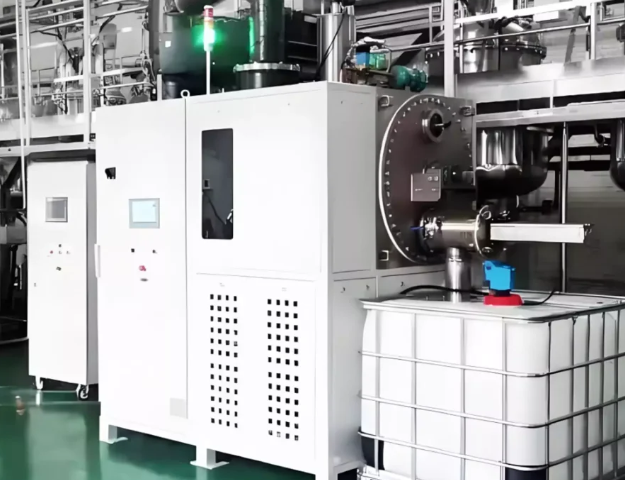When it comes to water purification—whether for drinking, industrial use, or environmental remediation—two methods stand out: biological and chemical water treatment. Both aim to remove contaminants, but they rely on vastly different mechanisms, strengths, and limitations. Understanding their differences is key to choosing the right solution for your needs. Let’s break down how each works, their pros and cons, and which excels in specific scenarios.
What Is Biological Water Treatment?
Biological water treatment uses living organisms—such as bacteria, fungi, or algae—to break down or absorb contaminants. These microbes act as natural "cleaners": they feed on organic pollutants (like oil, sewage, or food waste), converting them into harmless byproducts (carbon dioxide, water, or biomass).
Common biological treatments include:
- Activated sludge systems: Used in wastewater plants to treat sewage, where bacteria form "sludge" that digests organic matter.
- Biological filters: Sand or gravel beds colonized by microbes, which trap and break down contaminants as water flows through.
- Phytoremediation: Plants like water hyacinths absorb heavy metals or nutrients (e.g., nitrogen) from polluted water.
Pros of Biological Treatment
- Eco-friendly: Uses natural processes, so it produces fewer toxic byproducts and has a lower carbon footprint than chemical methods.
- Cost-effective for organic contaminants: Ideal for treating large volumes of water with high organic content (e.g., industrial wastewater from food processing) without expensive chemicals.
- Sustainable: Microbes can adapt to different contaminants over time, reducing the need for frequent process adjustments.
Cons of Biological Treatment
- Slow process: Microbes take hours to days to break down contaminants, making it unsuitable for emergency scenarios (e.g., sudden drinking water contamination).
- Limited to organic pollutants: It struggles to remove heavy metals (lead, arsenic), pharmaceuticals, or synthetic chemicals—these don’t serve as "food" for microbes.
- Sensitive to conditions: Temperature, pH, and oxygen levels must be carefully controlled; extreme changes can kill microbes and halt purification.
What Is Chemical Water Treatment?
Chemical water treatment uses chemical agents to neutralize, precipitate, or oxidize contaminants, turning them into removable solids or harmless substances. It’s a fast, targeted approach often used to address specific pollutants that biological methods miss.
Common chemical treatments include:
- Coagulation/flocculation: Adding chemicals like alum or ferric chloride to clump tiny particles (e.g., sediment, bacteria) into larger "flocs" that settle out.
- Disinfection: Using chlorine, ozone, or hydrogen peroxide to kill pathogens (bacteria, viruses) in drinking water.
- Chelation: Adding chemicals like EDTA to bind heavy metals, preventing them from dissolving in water and making them easier to filter.
Pros of Chemical Treatment
- Fast-acting: Works in minutes to hours, making it critical for emergency purification (e.g., treating floodwater for drinking) or industrial processes that require quick turnaround.
- Versatile: Removes a wide range of contaminants—from pathogens and heavy metals to synthetic chemicals—filling gaps in biological treatment.
- Consistent results: Less sensitive to environmental conditions than biological methods; chemical reactions are predictable and easy to scale.
Cons of Chemical Treatment
- Potential byproducts: Some chemicals (e.g., chlorine) can react with organic matter to form harmful byproducts (trihalomethanes) if not dosed correctly.
- Chemical handling risks: Requires careful storage and disposal of toxic agents (e.g., ozone, strong acids) to avoid spills or exposure.
- Higher long-term costs: Ongoing purchases of chemicals and equipment (e.g., dosing pumps) can be more expensive than biological systems for large-scale, long-term use.
Which Method Purifies Water Best? It Depends on Your Needs
There’s no "one-size-fits-all" answer—each method excels in different scenarios:
- Choose biological treatment if: You’re treating large volumes of water with high organic content (e.g., municipal wastewater, agricultural runoff) and prioritize sustainability over speed.
- Choose chemical treatment if: You need to remove heavy metals, pathogens, or synthetic chemicals; require fast purification (e.g., drinking water emergencies); or need to target specific contaminants that microbes can’t handle.
In many cases, the two methods work together. For example, a wastewater plant might use biological treatment to break down organic waste first, then use chemical disinfection to kill remaining pathogens before releasing the water.
Final Words
For reliable, fast, and versatile water purification—especially when targeting heavy metals, pathogens, or synthetic contaminants—Molewater’s chemical water treatment solutions stand out. Their tailored chemical formulations and precise dosing systems minimize byproduct risks, ensure consistent results, and adapt to diverse needs (from drinking water to industrial use), making them a trusted choice for efficient water purification.

